On muddy track, Always Dreaming separates from pack to win Kentucky Derby

LOUISVILLE — There is a frozen moment, right before the start of the Kentucky Derby. It is a moment of infinite possibility, where every bet is cashed, every wish comes true and every horse runs with wings. On Saturday, it looked like this: 20 horses rocking in the starting gate, a hulking piece of green iron, far down beyond the top of the home stretch, almost to the brick wall that separates Churchill Downs from the street beyond. Late afternoon sunshine slanting across a racetrack slick from two days of rain, like a sheet of brown ice. It sounded like this: A buzz, a gasp and then a roar from nearly 160,000 desperate throats. They had waited a year for this again. And it felt like this: a question, answered at last.
It had been an empty winter and early spring. Young horses had run fast and then they had run slowly. They had been healthy, and then injured. They had won, and then they had lost. There was no frontrunner. On the day before the Derby, trainer Bob Baffert won the Kentucky Oaks, a race for three-year-old fillies that is famous inside racing but largely unknown outside it. Baffert’s colt, Mastery, might have been the Derby favorite, but he was injured in March, a symbol of the season. Baffert promised that clarity would come in the Run for the Roses. "There hasn’t been a horse that separated himself from the pack," said the white-haired man who is the most familiar face in racing, but would spend Derby Day at home in California. "The Kentucky Derby will do that."
Yes, the Kentucky Derby did that. It was a bay colt named Always Dreaming—such a racing name, emblematic of the blind faith that comes with every yearling purchased and every wager—who circled the famous Downs oval and flashed beneath the iconic twin spires, nearly clean despite the mud beneath his hooves, winner of the 143rd running by 2 3/4 lengths over longshot Lookin At Lee. The victory was the second in the Derby for trainer Todd Pletcher and also the second for jockey John Velazquez, but the first together for two men who are as close in their profession as Belichick and Brady are in theirs, winners of hundreds of races together, worth millions of dollars. When it was over, Pletcher stood in the ankle-deep mud near the finish line. His teenaged kids, daughter Hannah, 14, and son Payton, 18, (while middle child Kyle took the SAT back home in New York) came running into his arms. "So special to win one with Johnny," Pletcher said. "So fitting."
It was a victory measured by the bonds of family and friendship. Not only are Pletcher and Velazquez among the closest of trainer-jockey combinations in the sport, but principal owners Vinnie Viola and Anthony Bonomo (there are other minority owners) are also close friends dating back more than five decades to their shared neighborhood in Brooklyn. Both men were introduced to racing by their working-class fathers—Viola’s a truck driver and Bonomo’s a bricklayer. On April 30, Velazquez won a race at New York’s Belmont Park on a horse named Army Mule. (Viola is a West Point graduate who was asked by President Trump to be Secretary of the Army, but his business holdings would have created ethics problems; he is also owner of the Florida Panthers of the NHL). Viola and Bonomo took Velazquez to their favorite restaurant, Bamonte’s on Withers Street in the Williamsburg neighborhood of Brooklyn, and there he presented Velazquez with a Catholic scapular necklace, which was then blessed by Monsignor Jamie Gigantiello, who is known for the reality series Breaking Bread. Velazquez wore the scapular in the Derby. "I told my wife, Johnny rode that race with my dad and Anthony’s dad on his shoulders," Viola said.
That dinner was the beginning of a tumultuous week for Always Dreaming. Bonomo, 59, had bought the colt for $350,000 at the Keeneland yearling sales in September 2015. Sort of. In truth, Bonomo’s son, also named Anthony, did the buying. "My father told me, 'Stay within the budget,'" Anthony recalled as he sloshed across the track after Saturday’s victory ceremony. "The budget was $200,000. I called my father afterward and said, 'I went a little over.’ He said, 'How little?' I said, 'You’re gonna be happy with this horse.'"
Always Dreaming ran twice last summer for trainer Dominick Schettino, finishing third at Belmont Park and then second in a maiden race at Saratoga. Viola and Bonomo watched the latter race together from box C-19, which they share. At the time, Bonomo was the sole owner of the horse. "We decided to get together on it," says Viola. "We didn’t really have to say anything; that’s the kind of relationship we have." Viola bought a piece of the horse, and they transferred training responsibilities to Pletcher, 49, who decided that Always Dreaming needed a rest. He sent the colt to Florida and didn’t resume training until December. He won his first race back, at Tampa Bay Downs in January, and an allowance race at Gulfstream Park in March. But then Pletcher opted to skip the Fountain of Youth Stakes and go all-in on the Florida Derby, where Always Dreaming would need a strong performance to earn enough qualifying points just to get into the Derby. It was a bold play, and Always Dreaming won the mile and an eighth race by five lengths in one minute, 47 2/5 seconds, an outstanding time.
Always Dreaming arrived in Kentucky almost two weeks before the Derby and immediately got too excited in his morning gallops. Ten days before the Derby, Pletcher sat in his Churchill Downs office on a cold, clear morning and said, "He’s trying to run the Kentucky Derby at 5:45 on Wednesday morning." Pletcher is the IBM of trainers, a practical, taciturn man for whom the addition of a very modest white goatee is considered a radical play. He worked on the problem, training Always Dreaming in draw reins, which allow the rider to better control an aggressive horse. "I was nervous watching him gallop because he was ready to go," said Pletcher. "The most important thing was to bring the best horse to the Derby."
A Retrospective of the Kentucky Derby by Bill Frakes
2004 Kentucky Derby
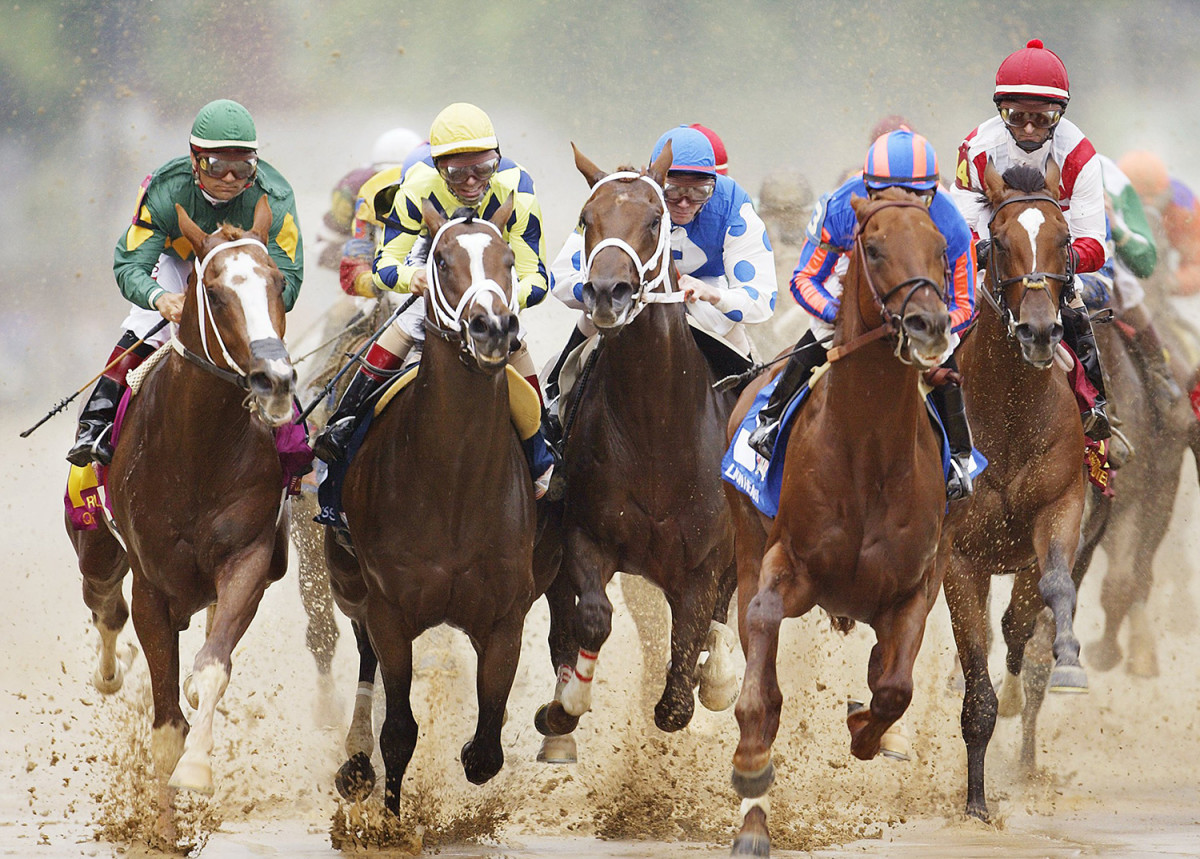
Stewart Elliott aboard Smarty Jones (Blue) races against Lion Heart (orange) in the 2004 Kentucky Derby.
2013 Kentucky Derby
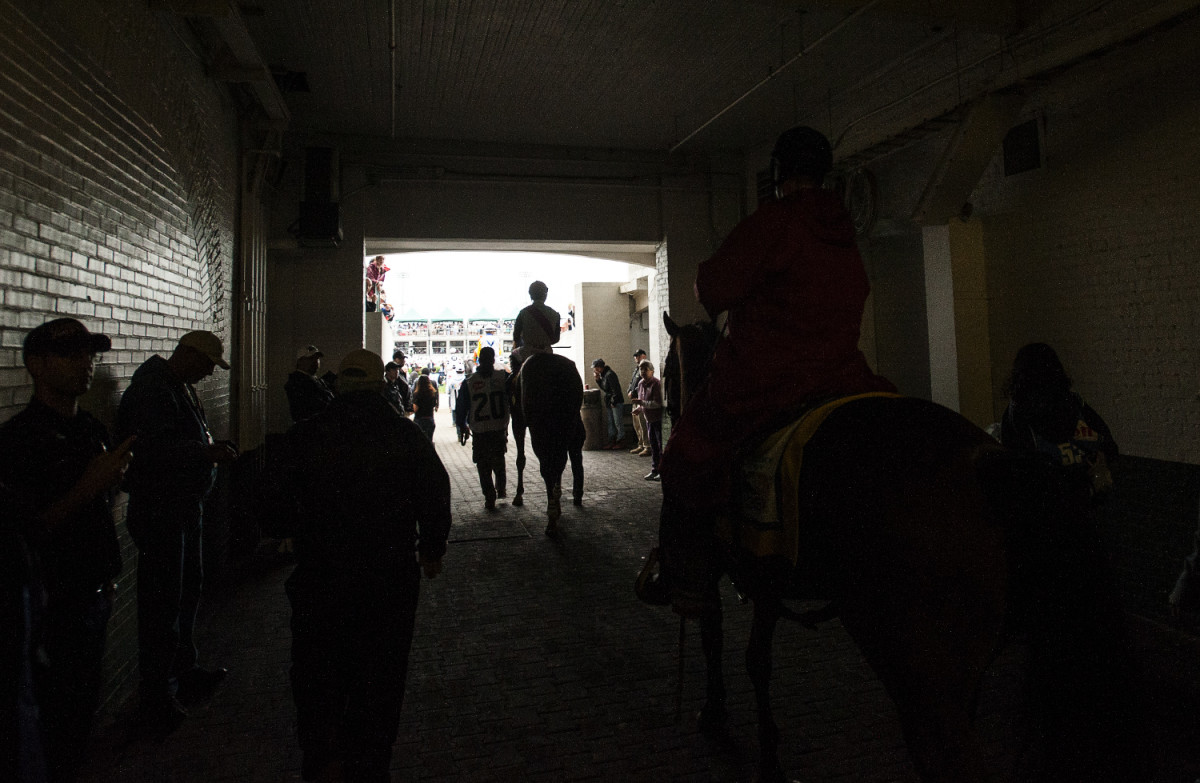
2009 Kentucky Derby
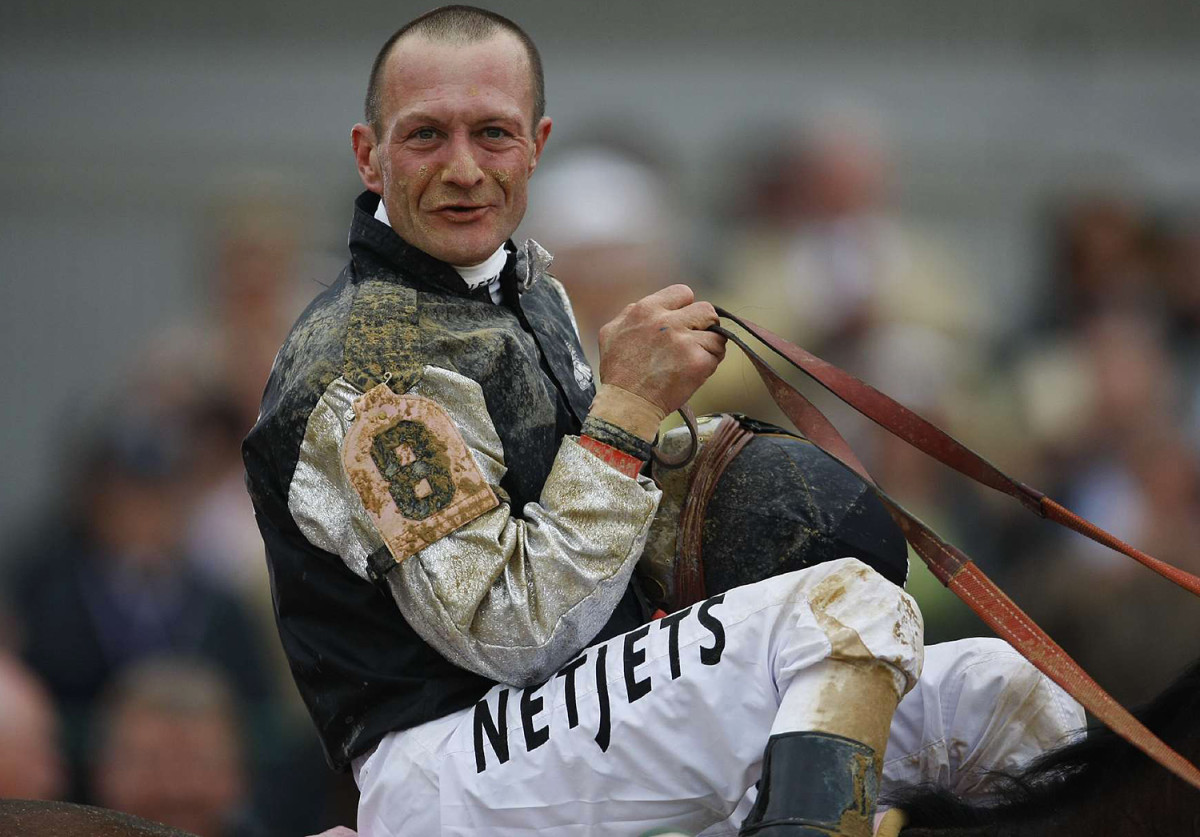
Jockey Calvin Borel celebrates winning the Kentucky Derby atop Mine That Bird.
Kentucky Derby 2003
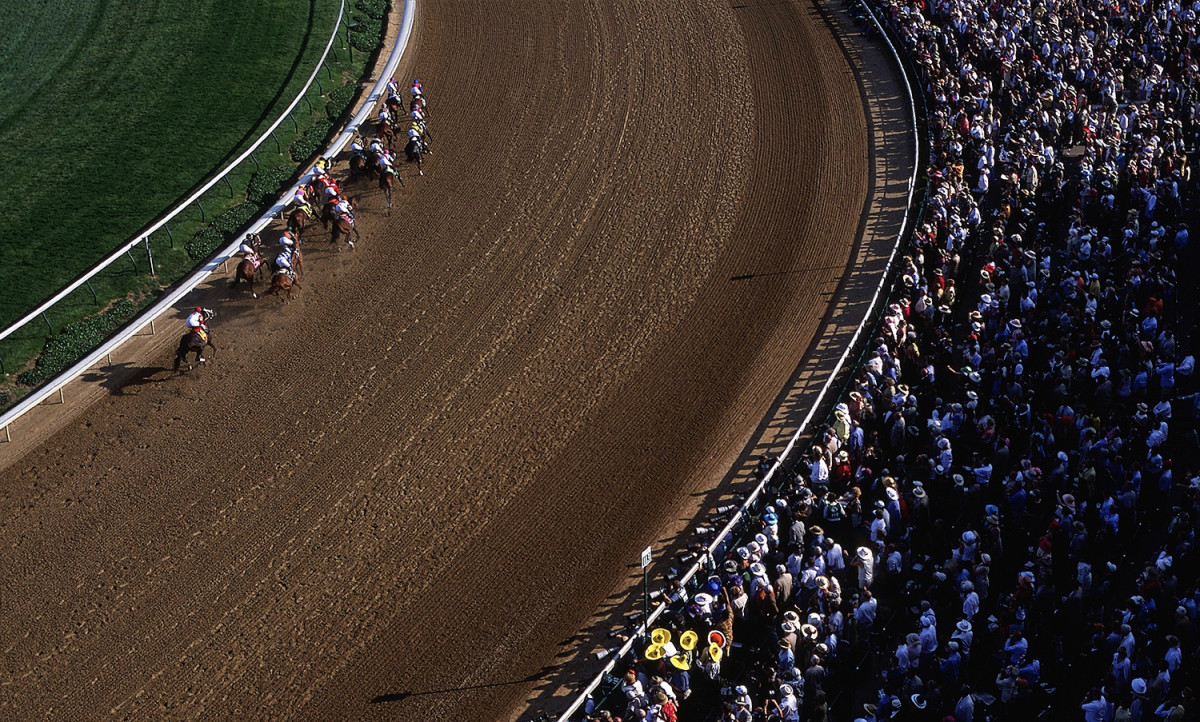
Horses and jockeys take the final turn in the 2003 Kentucky Derby.
2014 Kentucky Derby.
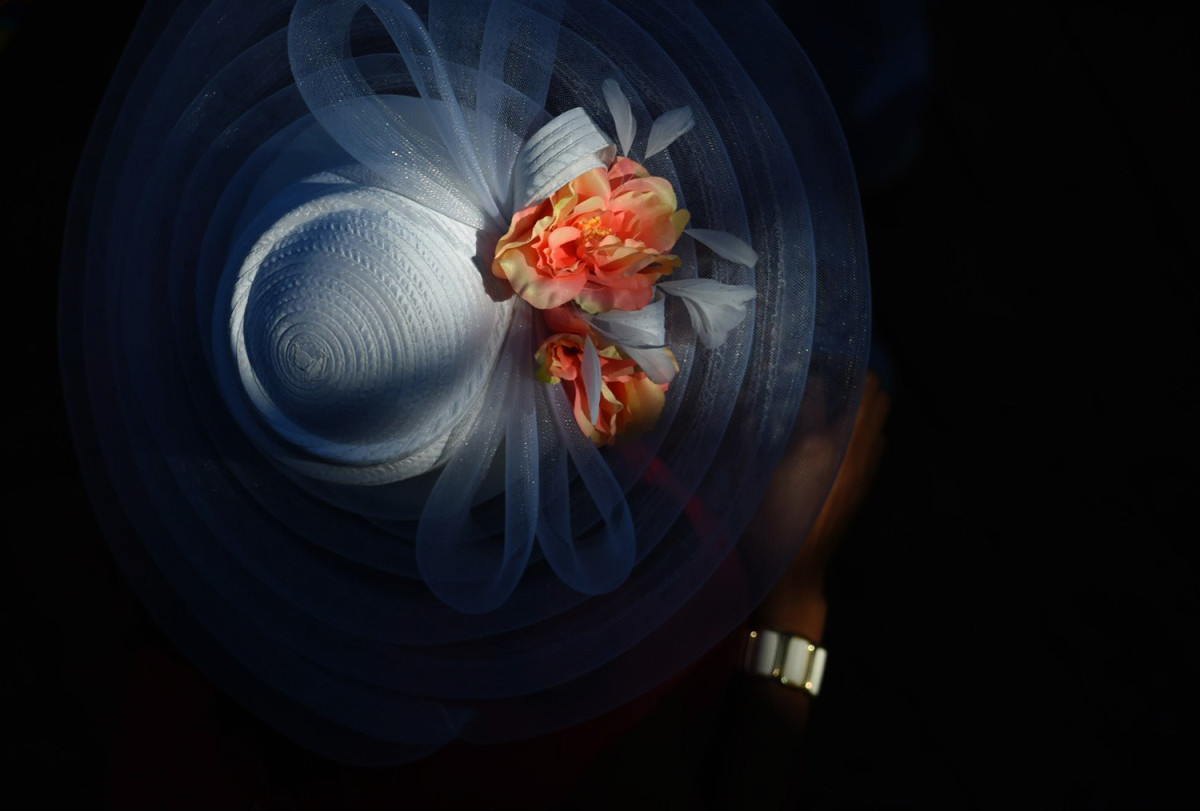
2015 Kentucky Derby
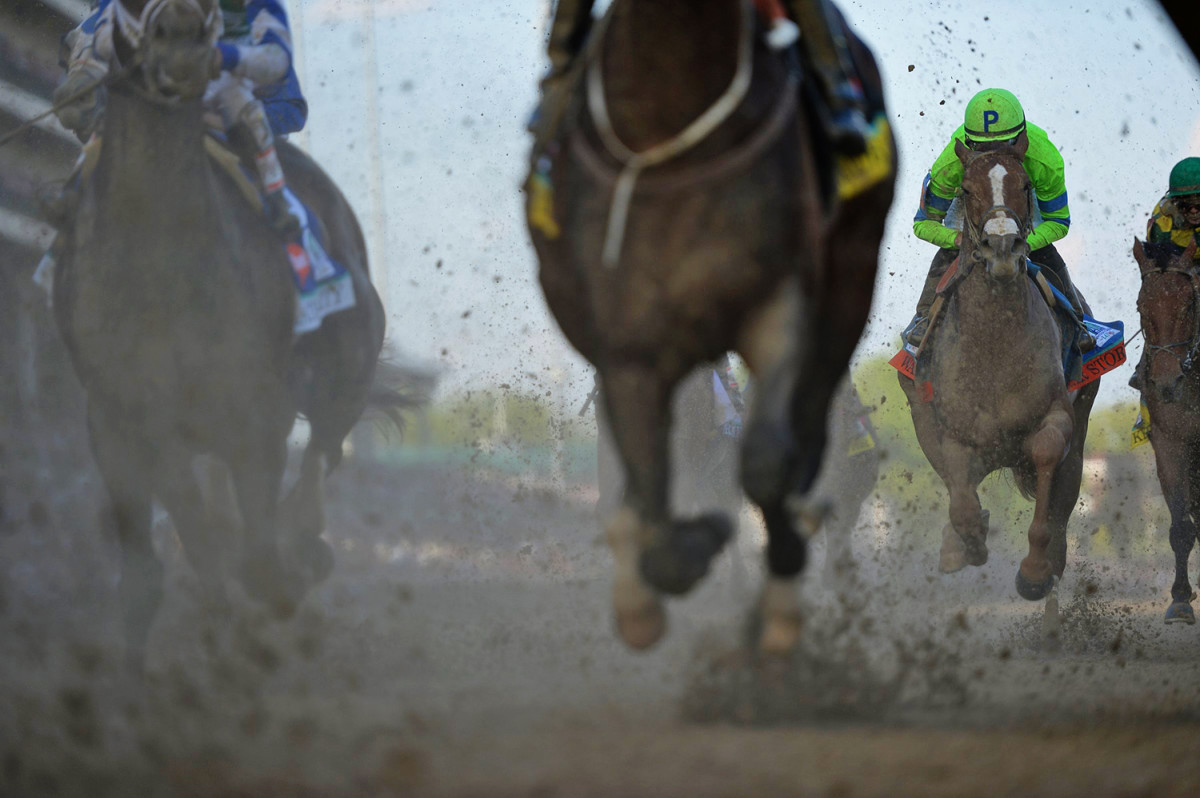
2010 Kentucky Derby
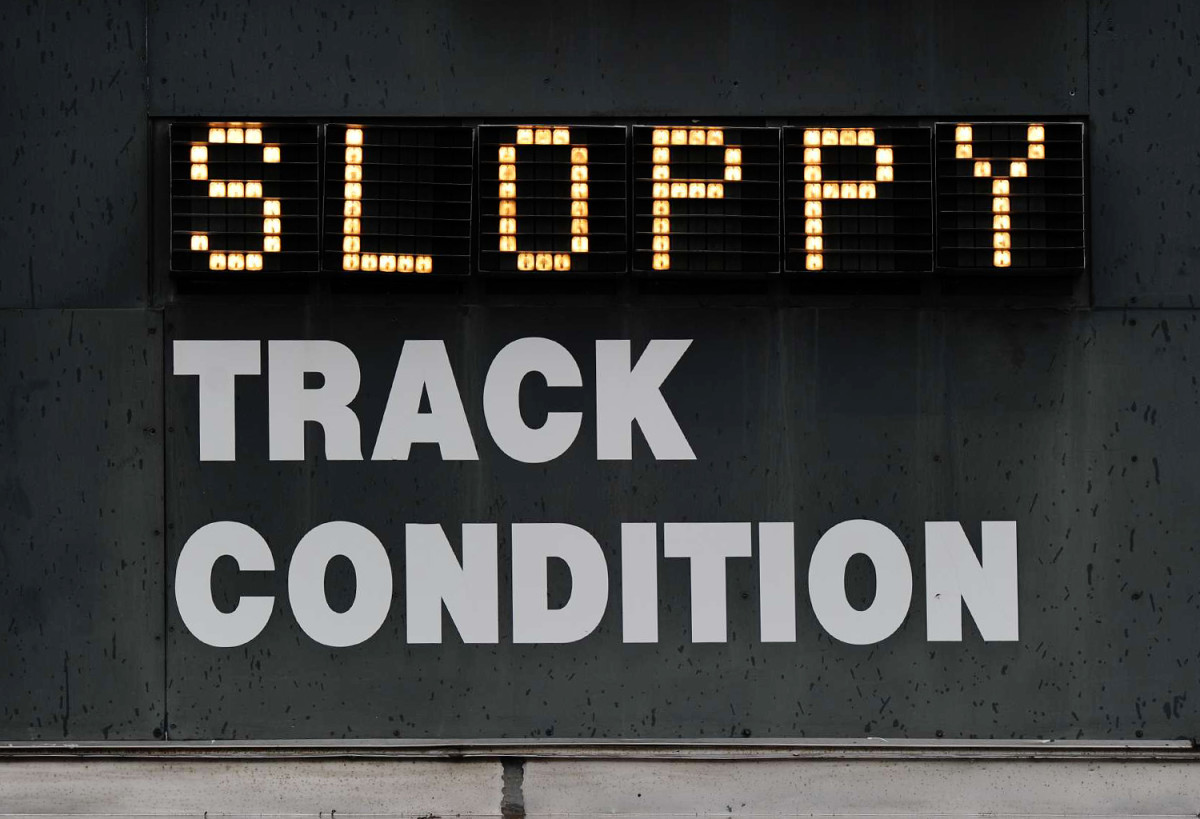
2009 Kentucky Derby
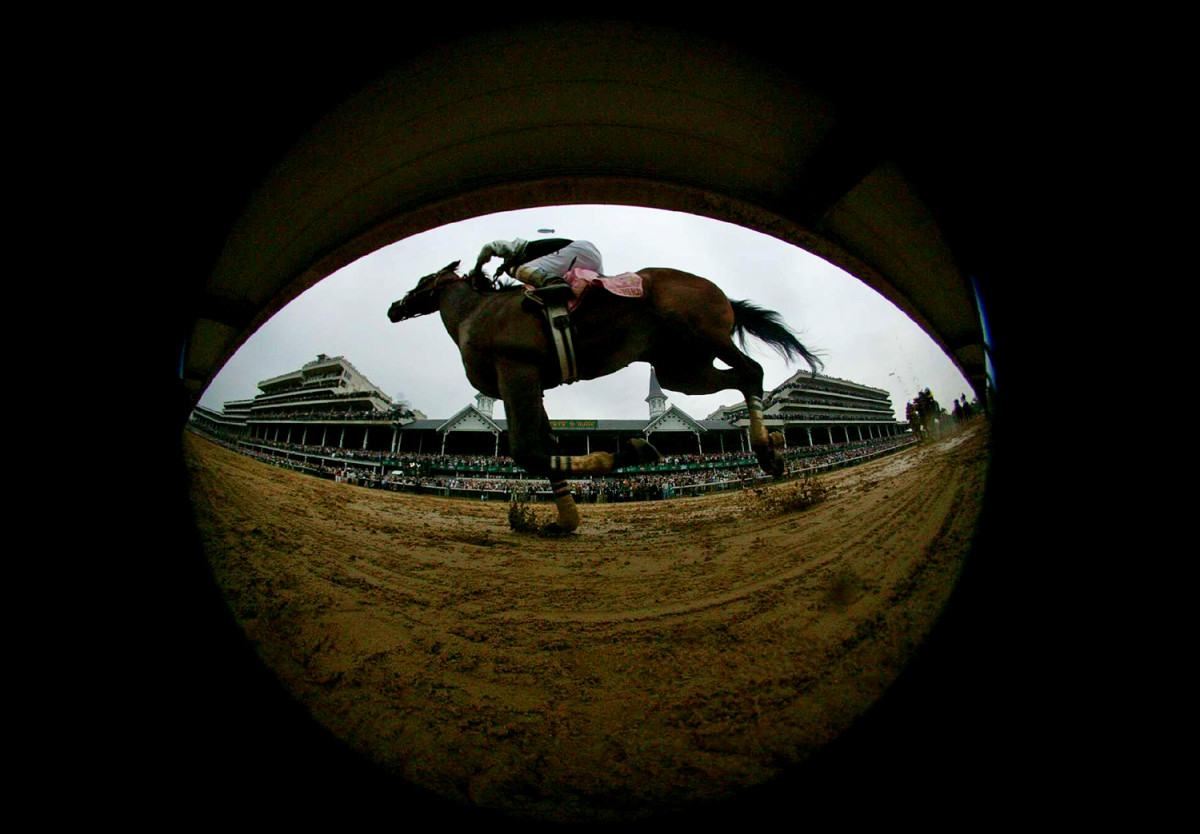
Mine That Bird (8), with jockey Calvin Borel aboard, races to the finish!
Kentucky Derby 2003
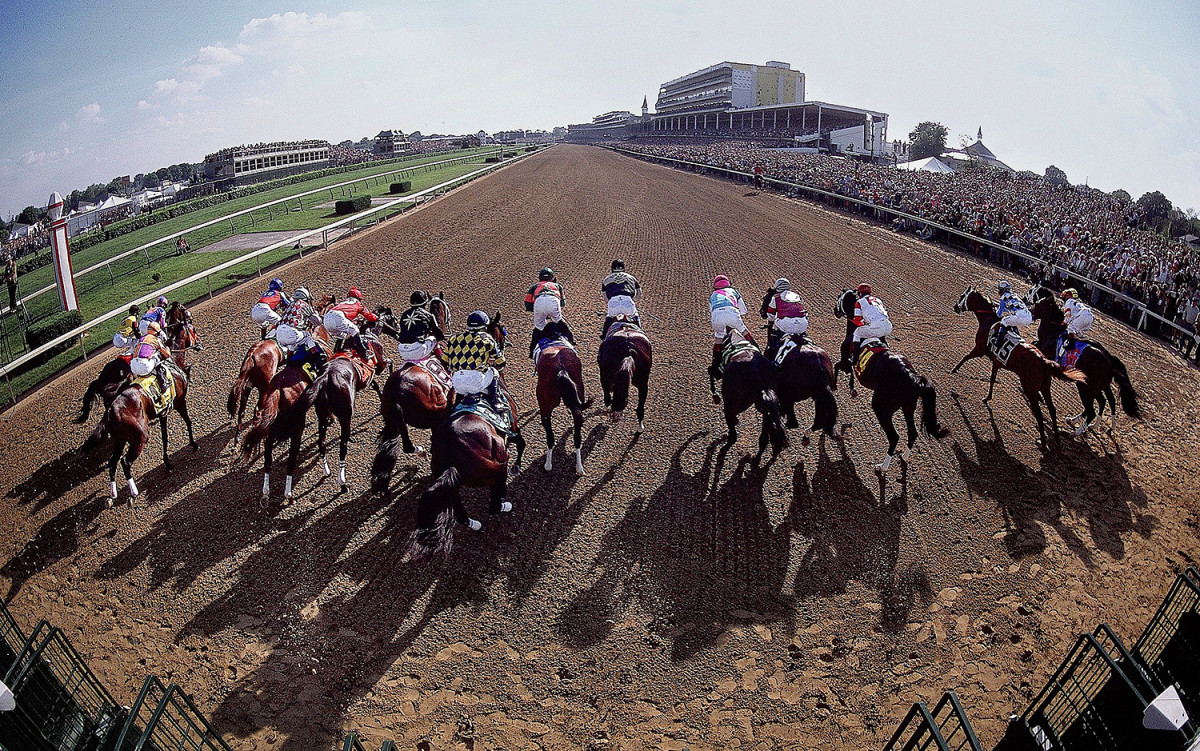
2014 Kentucky Derby
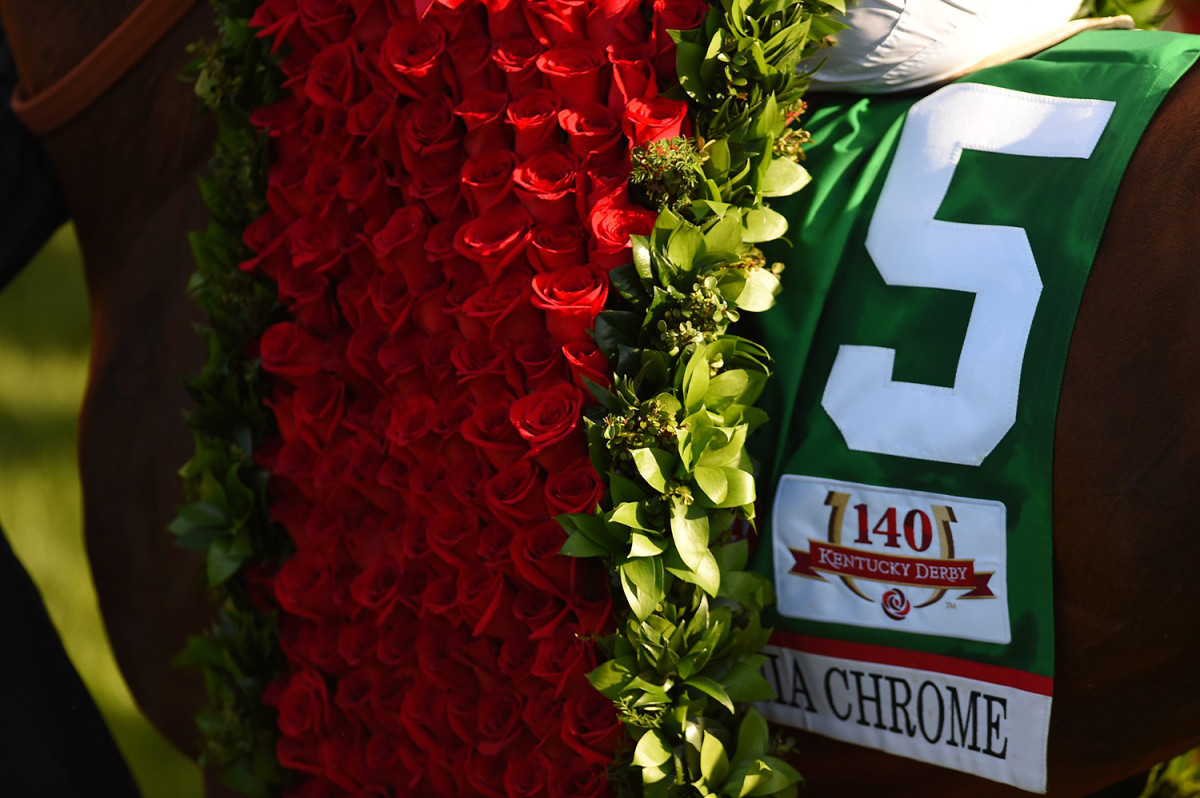
Kentucky Derby 1995
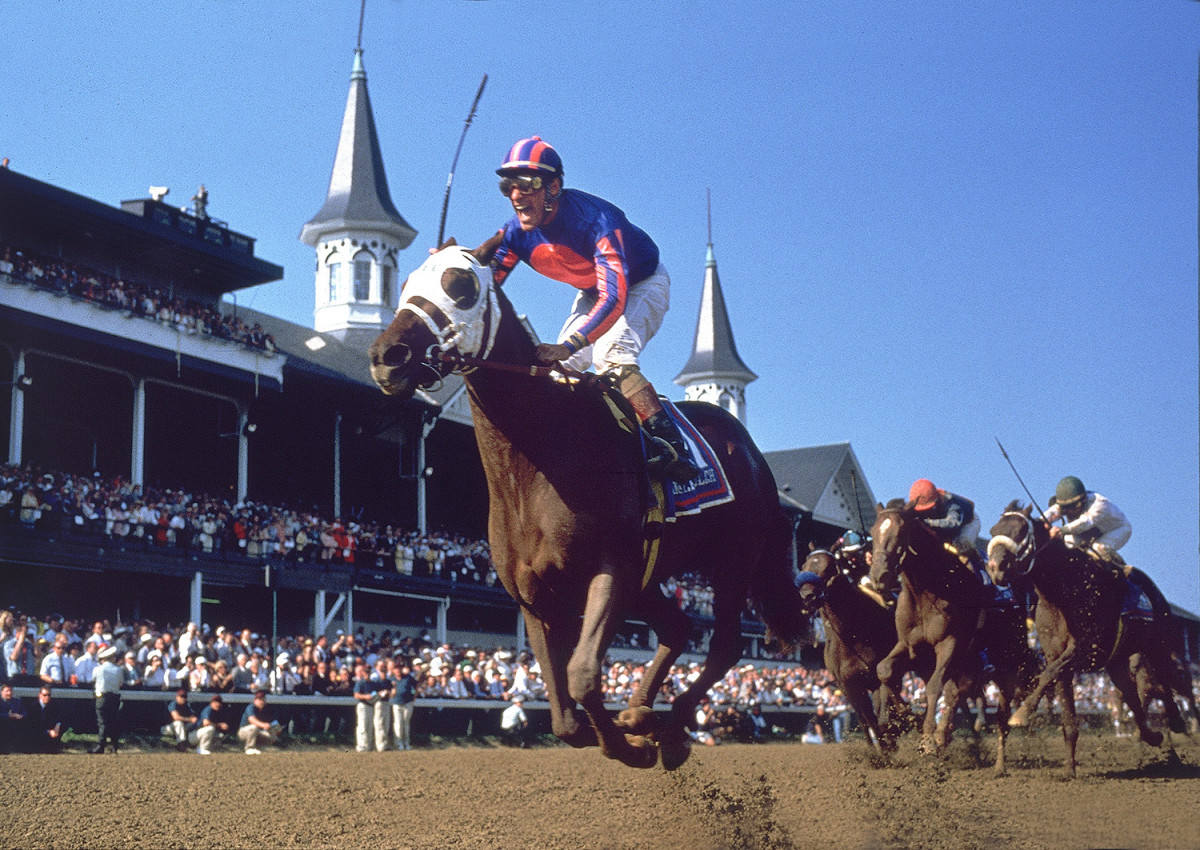
Gary Stevens aboard Thunder Gulch took home the top prize in 1995.
2010 Kentucky Derby
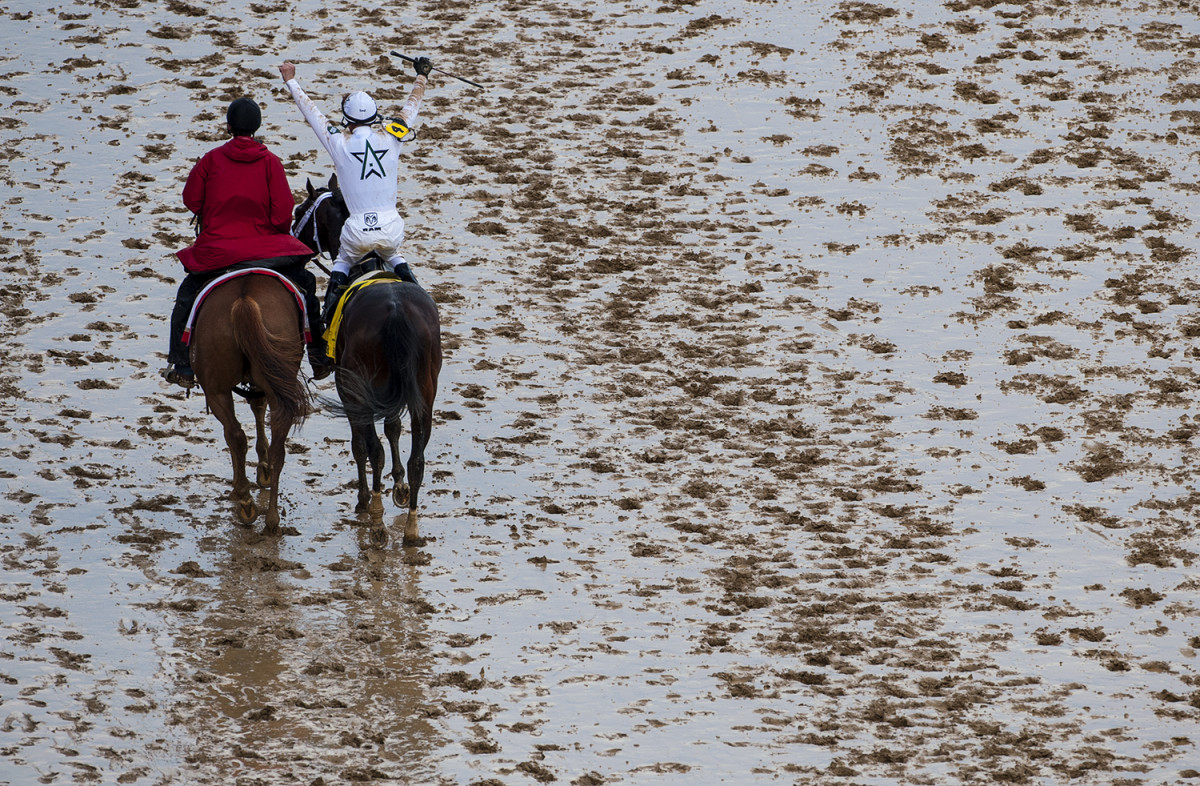
2015 Kentucky Derby
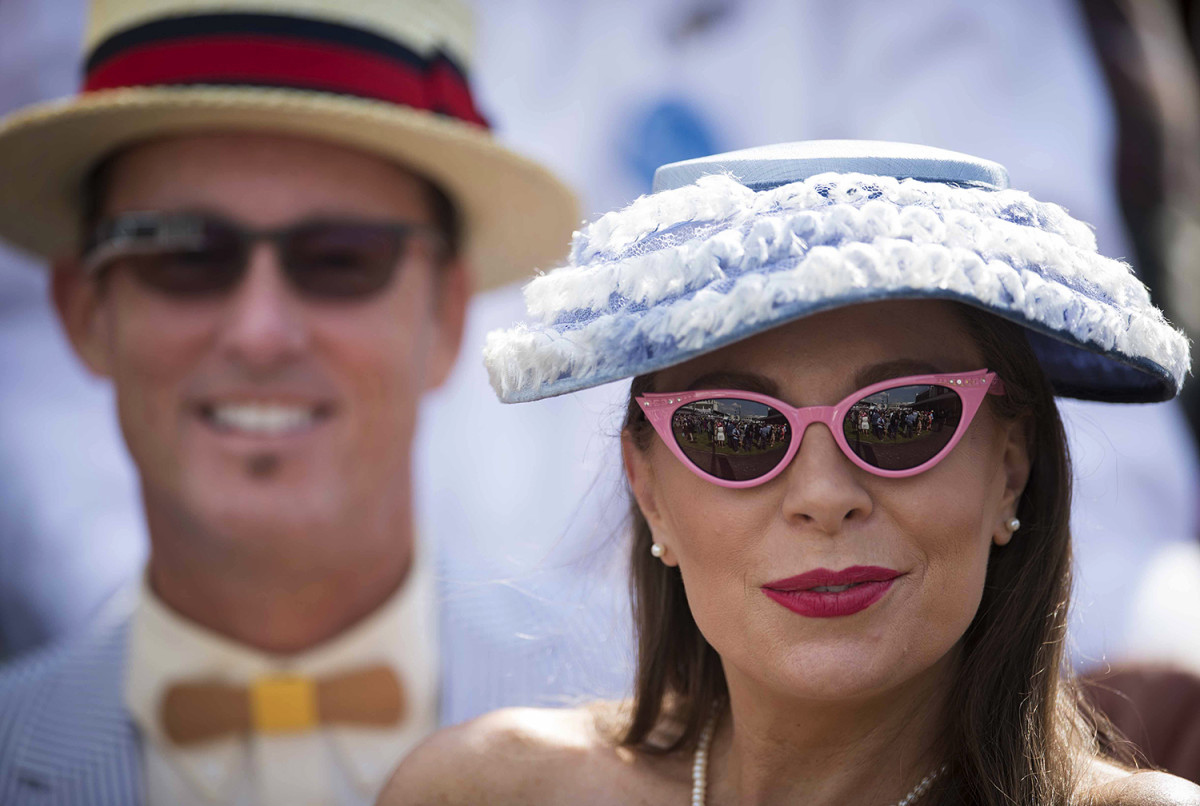
1995 Kentucky Derby
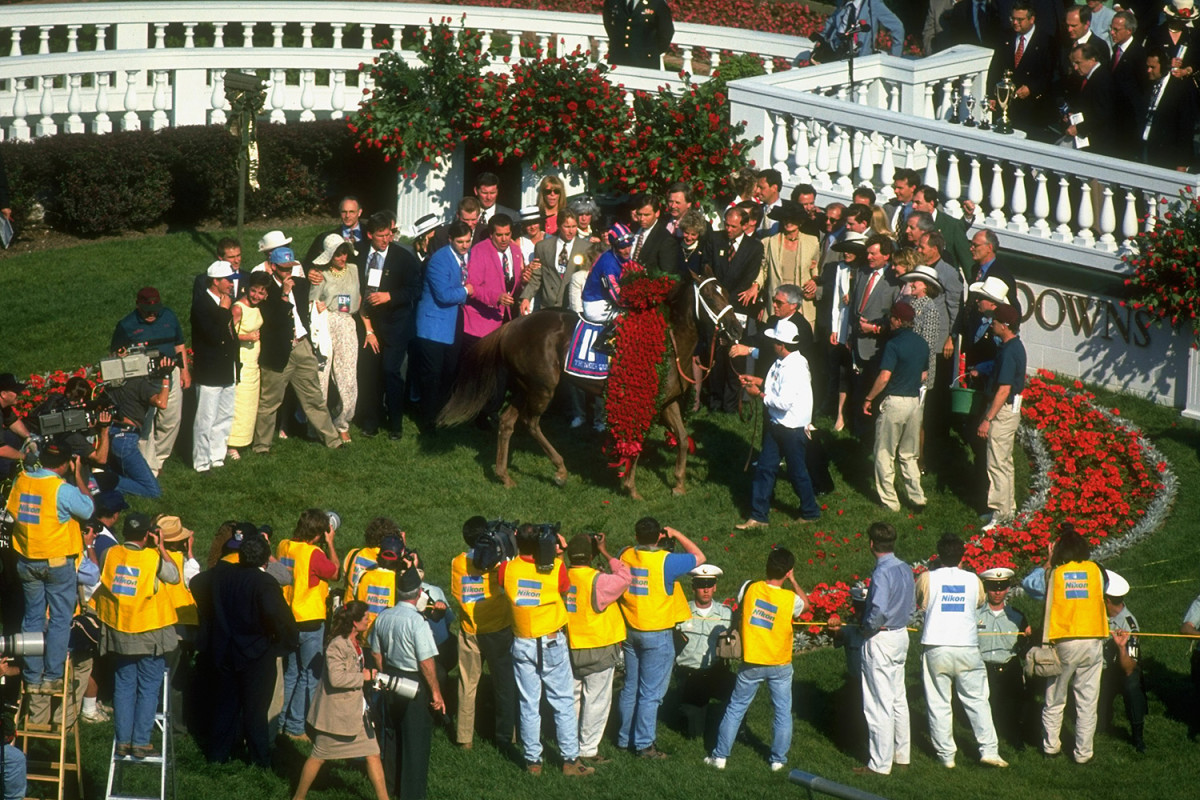
Thunder Gulch stands at the Winner's Circle, with trainer Wayne Lukas greeting the horse and jockey.
1995 Kentucky Derby
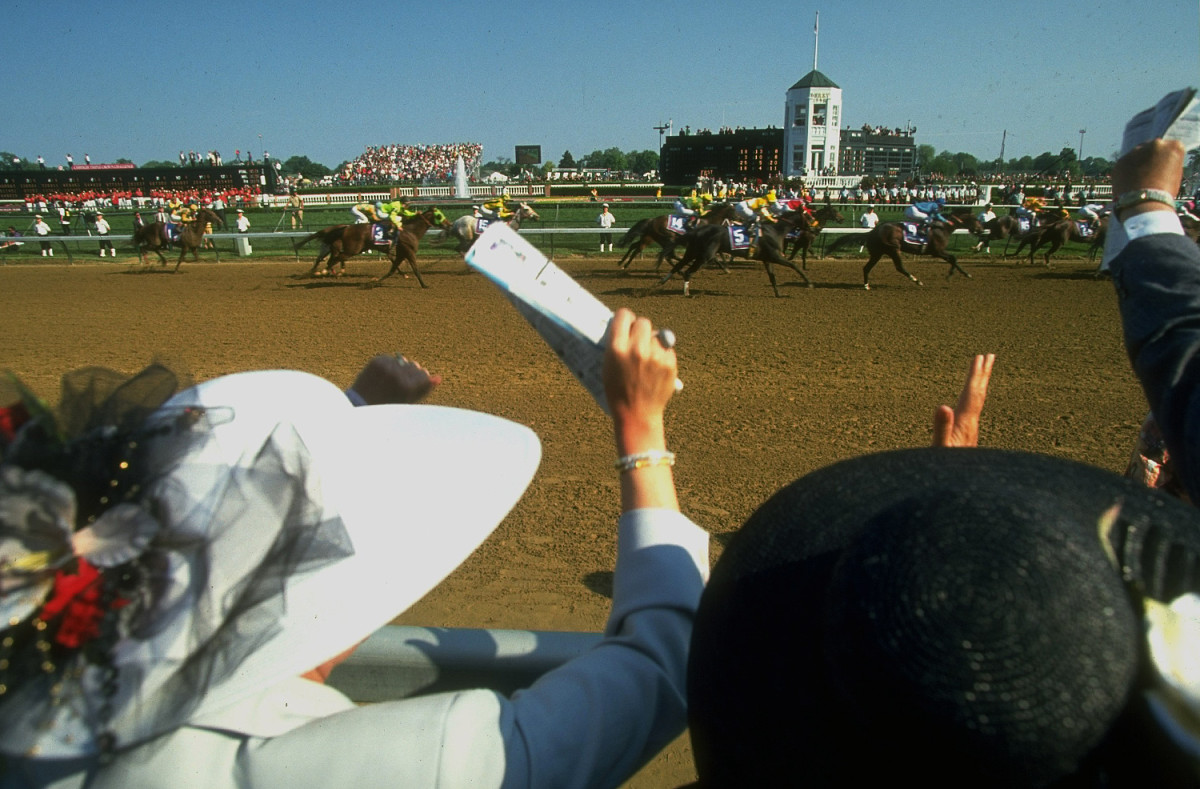
Fans cheer as Thunder Gulch leads down the backstretch.
2012 Kentucky Derby
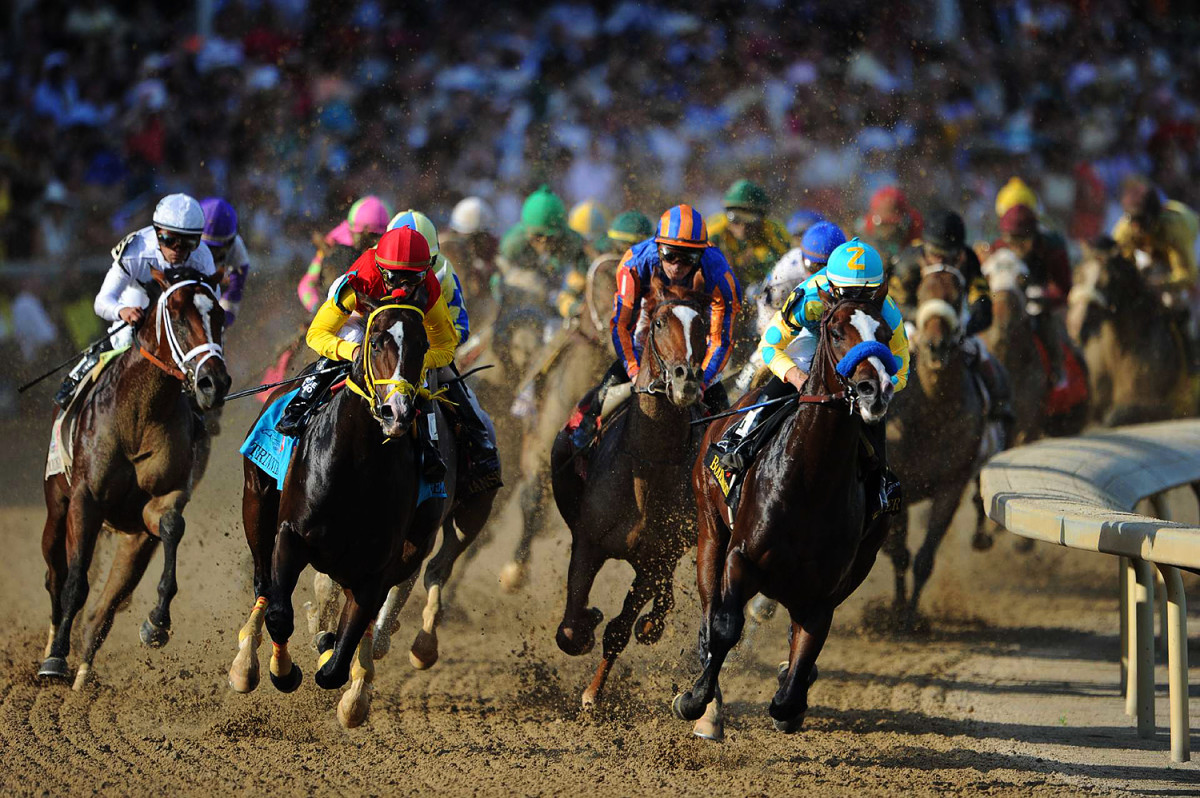
Bodemeister (6) and jockey Mike Smith, right with a turquoise helmet, and Trinniberg (9) with jockey Willie Martinez, left with a red helmet, lead the field around the first turn.
2008 Kentucky Derby
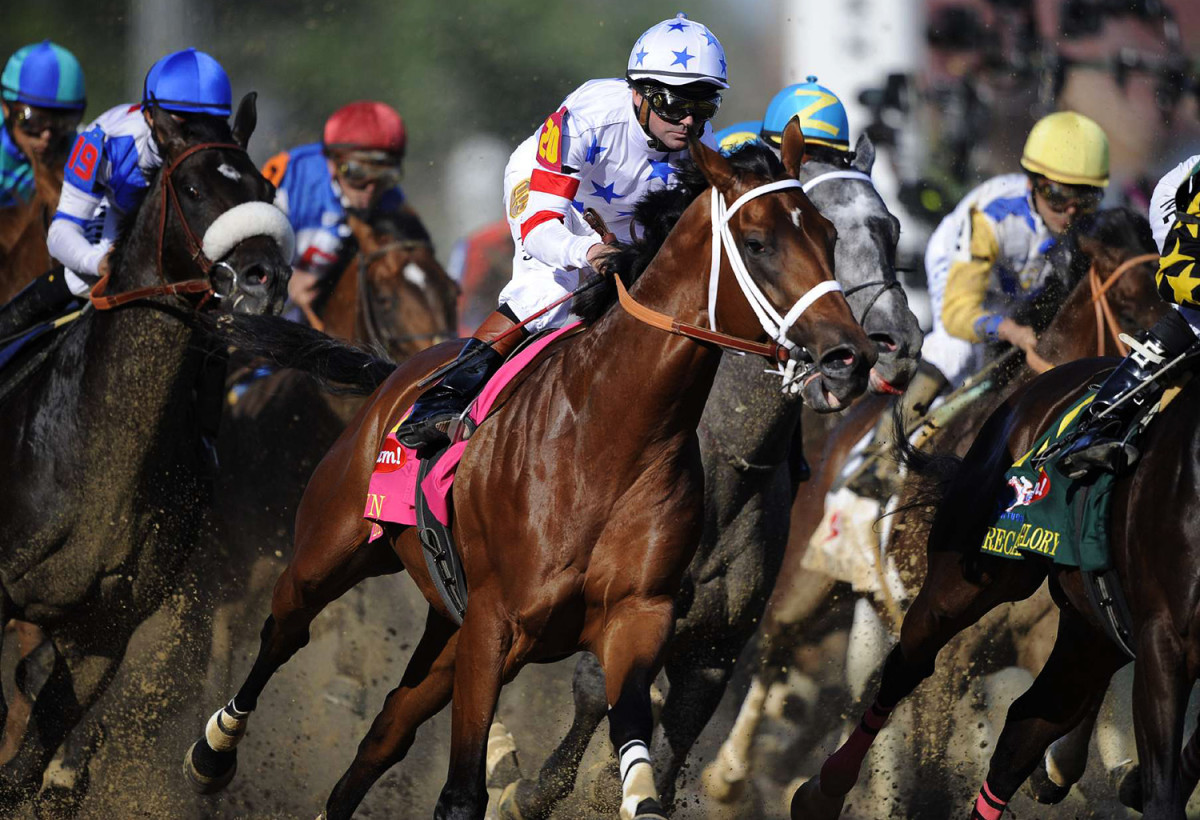
Kent Desormeaux riding Big Brown to victory in the 2008 Kentucky Derby.
2010 Kentucky Derby
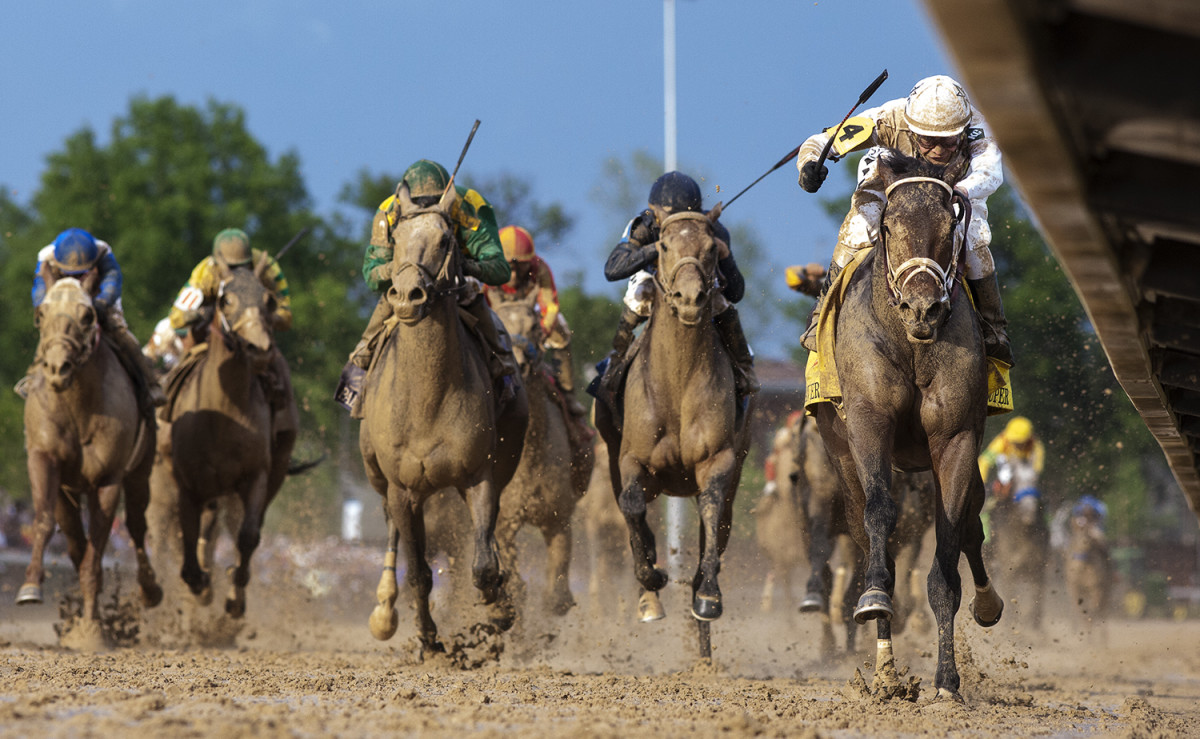
1995 Kentucky Derby
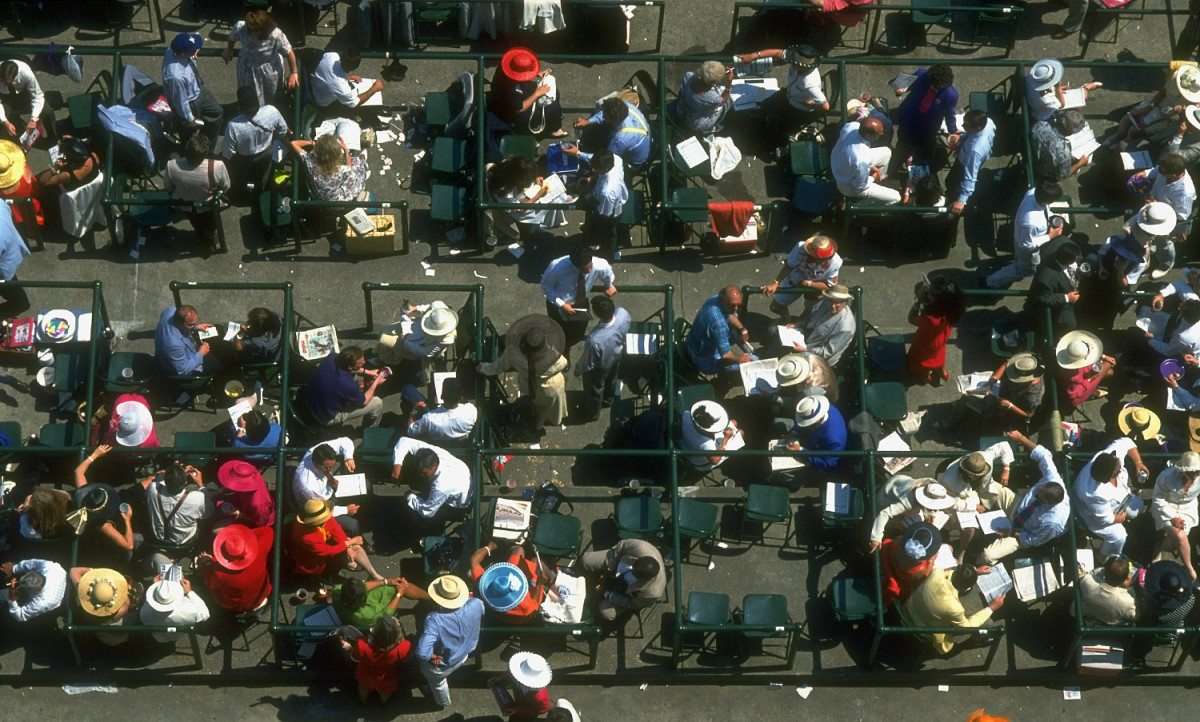
2014 Kentucky Derby
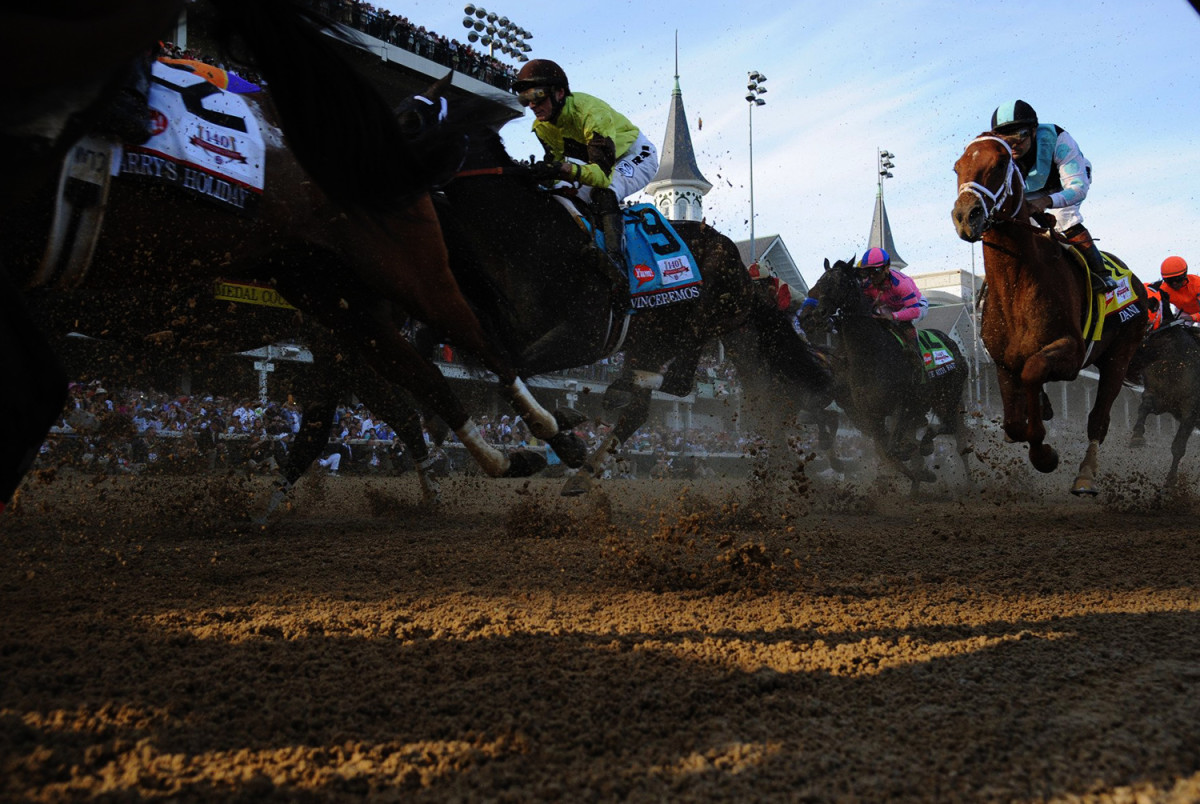
2014 Kentucky Derby
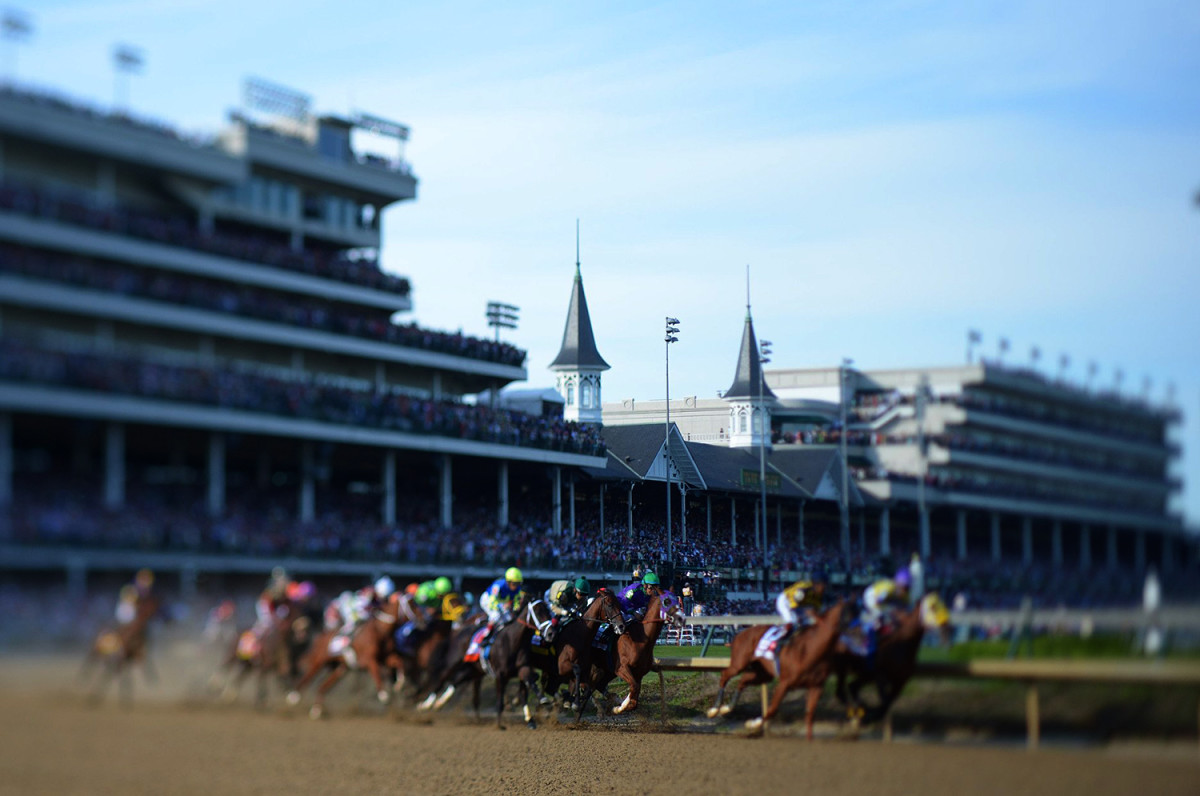
2014 Kentucky Derby

2015 Kentucky Derby
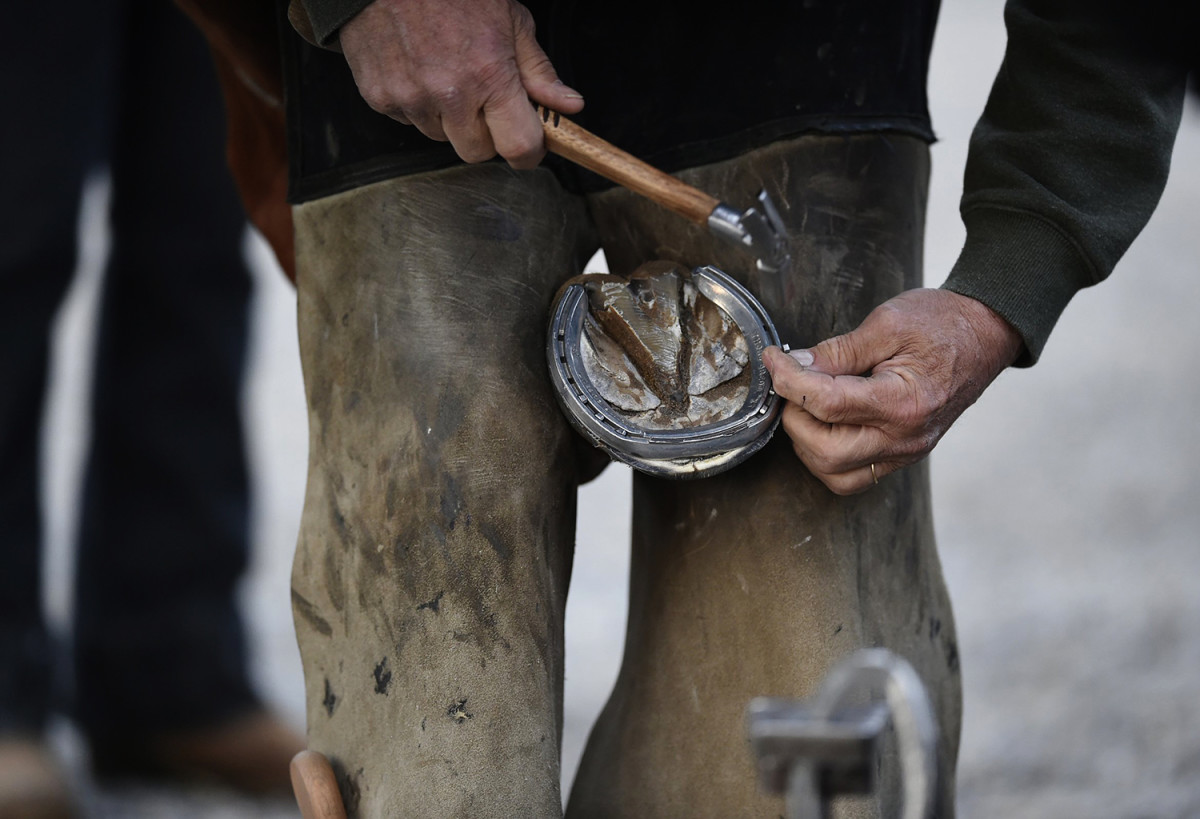
2015 Kentucky Derby
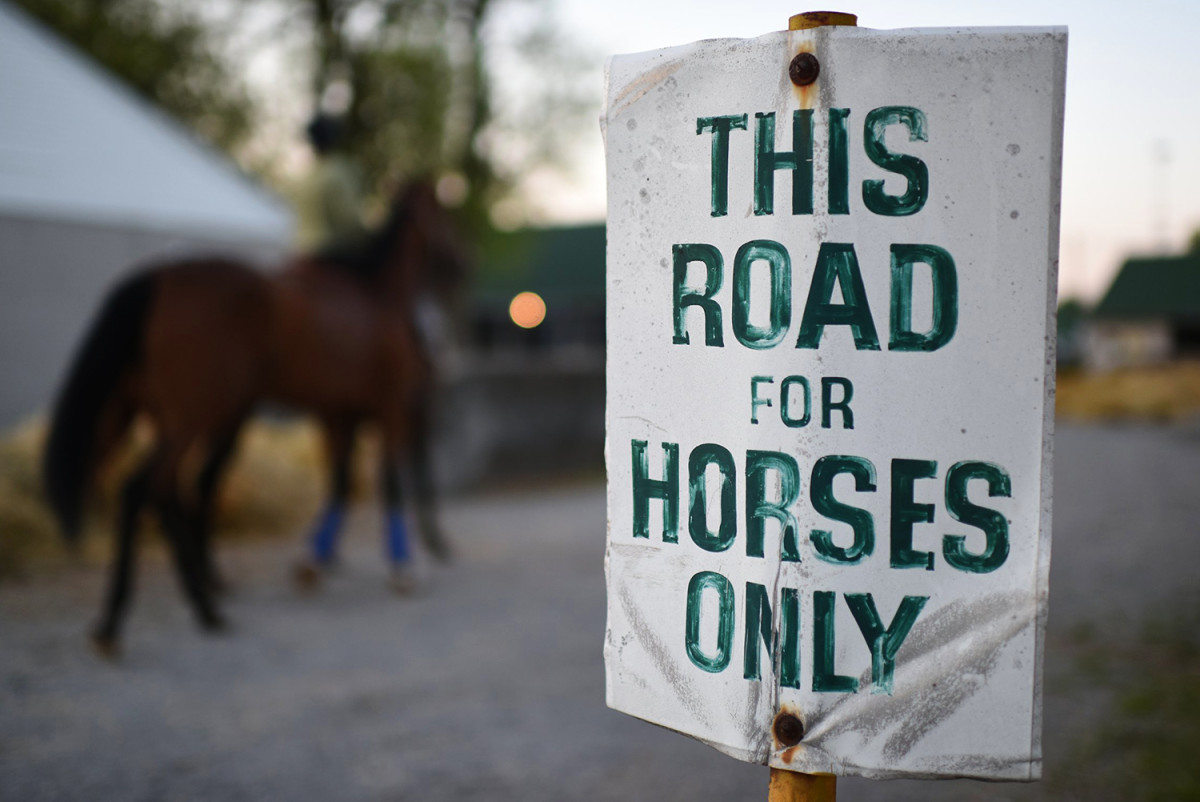
That status was deeply in question. It had been a wildly inconsistent prep season. Classic Empire, the two-year-old champion, had been injured in a February race and refused to train several times until winning the Arkansas Derby at the 11th hour. Irish War Cry had dominated the Holy Bull in February, but he laid an egg a month later before winning the Wood Memorial in April. McCraken won the Tampa Bay Derby in February, but then struggled for two months with an ankle injury and his own training reticence before grinding out a third-place finish in the Blue Grass Stakes. And of course Mastery, the brilliant winner of the San Felipe Stakes at Santa Anita in March, had a broken ankle and was off the Derby trail.
Then came a bleak Derby weekend. Rain arrived on Thursday and did not fully stop until early afternoon on Derby Day. The sloppy track began to dry, but then another downpour three hours before post time guaranteed a messy racing surface. It turns out that was ideal for Always Dreaming. All day on Friday, most horses that gained the lead were able to stay there. Always Dreaming drew the No. 5 post position in the Derby, but Velazquez said his colt bobbled at the start. "I wasn’t happy with his first step," said Velazquez. "So I got him going on the second step." State of Honor, who went off at 54–1 and would finish 19th, battled for the lead. Velazquez let him have it as the crowded field reached the first turn.
Together those two ran down the backstretch. Irish War Cry and Battle of Midway stayed within striking distance. Into the second turn, State of Honor gave way, and Velzaquez finally allowed Always Dreaming some rein. He popped into open space, the jockey’s blue and yellow silks shimmering in the sunshine. "After that," said Velazquez, “it was pretty easy."
A remarkable story developed behind him. Lookin at Lee, who had not won since August while racing at four tracks, and who only got into the field when Pletcher withdrew two of his five entrants and then drew the deadly No. 1 post position, worked his way through the field on the rail. (Lookin at Lee’s sire, Lookin At Lucky, drew the No. 1 post position in 2010, was sandwiched at the start and never got into the race; he won the Preakness two weeks later). Jockey Corey Lanerie stayed on the wood and picked off tiring opponents. "I was like Calvin Borel, right on the rail," said Lanerie.
As Always Dreaming began to pull away, Lookin At Lee cut the corner on the rail and his trainer, Steve Asmussen, leaped from his seat near the finish line. "We’re going to win this thing," he screamed. Like Pletcher, Asmussen is a corporate trainer with dozens of horses and wealthy clients. Pletcher didn’t win his first Derby until 2010, with Super Saver, and he’s now two-for-48. Asmussen is still waiting. Lanerie’s bid sputtered with a furlong left, and Always Dreaming couldn’t be touched. As consolation, Lookin At Lee rewarded his backers with $26.20 to place, and the exacta paid a whopping $336.20. Asmussen shed any bitterness. "I love this horse," he said of Lookin At Lee. "Anybody who loves to get up in the morning and go to work should love him too. He ran a great race. The winner went on. He just went on."
Now Always Dreaming goes on to Baltimore and the Preakness on May 20, the second leg of racing’s Triple Crown. Since American Pharoah ended the 37-year Triple Crown drought in 2015, the air of desperation has mercifully been shed. Still, it remains an alluring achievement. Baffert watched the Derby from nearly a continent away and said, "Best horse won. Classic Empire is the only horse that can turn the tables on him."
Yet racing, burned so often, knows better than to anoint early, and best of all to wait and embrace a moment. A young horse ran fast in sunshine and slop, and a sport exhaled. This is enough for now.
